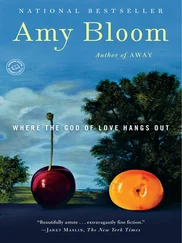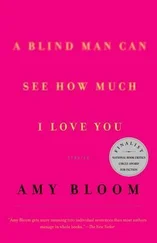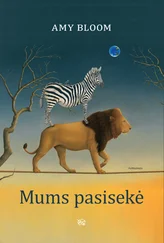In modern America, we have done our own disappearing act on hermaphrodites: we have turned a lot of baby boys into baby girls, and a lot of healthy baby girls into traumatized ones. A number of scientists and academics have written about this in the last ten years (most notably, the gifted researcher Dreger, the eminently readable and imaginative Fausto-Sterling, the less readable, provocative Judith Butler, and the psychologist Suzanne Kessler), but the person who has almost single-handedly changed both the dialogue on the subject and the surgical practice itself is Cheryl Chase, businesswoman turned activist. If Al Gore had had Cheryl Chase running his campaign, he’d have moved into the White House in January 2001. In a world of megacorporations, tobacco-sponsored rock concerts, and vast, unsavory alliances, Cheryl Chase, perceived as a “true hermaphrodite,” first declared a girl, then a boy, then not much of a boy, then operated upon to make her a more suitable girl by removing her “too large” clitoris (what was too large as a clitoris was, of course, terminally too small as a penis), is a modest, relentless, sleepless army of one.
In 1993, she was just an angry woman, distressed and puzzled by the little she knew of her own traumatic history, and anxious to move past it by offering support to people born intersexed (that is, people who have historically been called, with mystery but not much meaning, “hermaphrodites”). She did outreach and information-sharing and complained to anyone who would listen about the unnecessary and usually damaging surgery routinely visited upon babies born with ambiguous genitals — five babies every day, as a conservative estimate, to state the incidence in another way. She picketed; she fired off press releases from her home in the name of her fledgling group, the Intersex Society of North America (ISNA); she organized support meetings and sent out an indignant and well-informed newsletter (now the ISNA Newsletter , formerly and more compellingly called Hermaphrodites with Attitude ). Cheryl Chase and her lieutenants, volunteers all (no one meets Chase and walks away without volunteering their time or making a donation to the cause — she would hardly speak to me until I agreed to send ten dollars for an ISNA videotape), have changed the terms of discussion about surgery and treatment for intersexed babies. The head of pediatric endocrinology at Oakland Hospital now supports the ISNA point of view, the American Medical Association’s Archives of Pediatrics and Adolescent Medicine has run articles that mirror ISNA’s position, and Chase herself has been invited to give talks at the Albert Einstein College of Medicine in New York City, at Denver Children’s Hospital, and at the 2000 meeting of the Lawson Wilkins Pediatric Endocrine Society, as the honored closing speaker.
It may be that if you can tell the right story, at the right moment, even people who don’t wish to hear will hear. The story of intersex babies is medically complicated, but ISNA simplified it — much to the disapproval of many respected physicians and to the dismay of John Money, whose narcissism and bad faith in the treatment of John/Joan gave John Colapinto’s excellent As Nature Made Him a sexually provocative, creative, and suavely frightening villain. Through careful study and the pained honesty of intersexed adults, ISNA has undermined the standard argument of good-hearted people (“Surgery may not be a great solution, but it’s the only one we have, and it would be worse to raise those poor children as ‘nothings’ ”), and it has undone the peculiar psychological argument that many pediatricians made (parents would be so upset every time they changed a diaper that they would not be able to love the child, and a child with inadequate genitals, especially a boy, would not be able to survive the scrutiny of other children). As common sense dictates, ISNA supports surgery when a medical condition requires it, and encourages families to consult with endocrinologists, knowledgeable psychotherapists, and, if appropriate, the best surgeons they can find. (As every medical student knows: If it works, keep doing it; if it doesn’t work, stop doing it; and never go to a surgeon unless you want surgery.)
“We certainly would like to see people become less gender-phobic,” says one ISNA newsletter, “but we don’t think dumping intersex kids into a gender-phobic world with no gender or a ‘third gender’ is the way to go.” Cheryl Chase says, firmly and repeatedly, that physicians who resist reform and feminist theorists who are tantalized by the idea of a “non-gender” may have opposite agendas regarding the fabric of our society and its rigid distinctions between men and women, but that both approaches make pawns of the intersexed. Chase and her small band refuse to be used by any other movement, while making strategic partnerships with NOW and GenderPAC (which had its first national conference in 2001, spreading an umbrella from NOW to the gay Boy Scout and the man fired from Winn-Dixie for crossdressing in his free time). It is ISNA’s goal to build a movement without a cult of personality, and it is true that it is not Chase’s charm that rouses people. It is the bareness of the truth and her emotionally charged, carefully contained delivery. John Money has charm. Cheryl Chase has changed a small part of how some people live their lives. “Small,” of course, only if it doesn’t affect you — and it affects more people than you think.
Virilization affected Angela Moreno Lippert when she was twelve years old, living in a small town in Illinois, dearly loved by her parents and grandparents, more than a little popular in elementary school, an A student and a dancer of the kind that fill Miss Beth’s School of Movement and Miss Toni-Lynn’s Tap and Toe. Angela came home from dance class one day, sweaty and cheerful, flung her clothes onto her bed, and ran a bath. Her mother was on the phone, chatting to a neighbor, keeping half an eye on Angela as she dropped her towel and sank into the tub. By the time Angela stood up to dry off, her mother was hovering in the doorway. Mrs. Lippert took a long, close look at Angela and hung up on her neighbor. She asked Angela to lie down on the couch, and she pulled the towel aside. There, peeking out from between Angela’s labia, was her prominent two-inch clitoris, something that Angela herself had noticed over the course of the last year and had considered a source of deep pleasure, although probably worth concealing in the locker room. Angela knew enough to wear double layers of underpants if she was someplace where she might be observed, but she had enjoyed masturbating, without too much guilt, and had assumed that her clitoris was a minor anomaly, like red hair or being double-jointed, except that its location suggested that discretion was advisable.
Mrs. Lippert burst into action. The elderly pediatrician was called, and for the first time in all of Angela’s childhood visits, she asked Angela to remain undressed while she brought in a colleague. Both physicians inspected Angela’s genitals, but neither of them said anything to her. The Lipperts got an immediate referral to one of the two pediatric endocrinologists in their region. The new doctor was fascinated not only by Angela’s oversized clitoris but by the Lipperts’ ethnicity. A dozen times she asked if they were sure they weren’t from the Dominican Republic, and each time, Mrs. Lippert assured the doctor that the Hispanic side of her family was Mexican, for several generations. (As Angela learned years later, 5-alpha-reductase deficiency, in which apparently female children masculinize during puberty, is exceptionally common in the Dominican Republic.) Evidently concluding that there was nothing more to be learned about the family background, the doctor arranged blood tests and a sonogram. No uterus was found in the sonogram. Angela was told to sit on a hall bench “for what seemed like forever, and when the doctor called me back to the room, it was obvious my parents had been crying.” When they left the hospital, her mother gave her a card that Angela still has. It said: “Our dearest Angela, Nothing has changed, you’re still our dear sweet little girl, Love, Mom and Dad.”
Читать дальше












